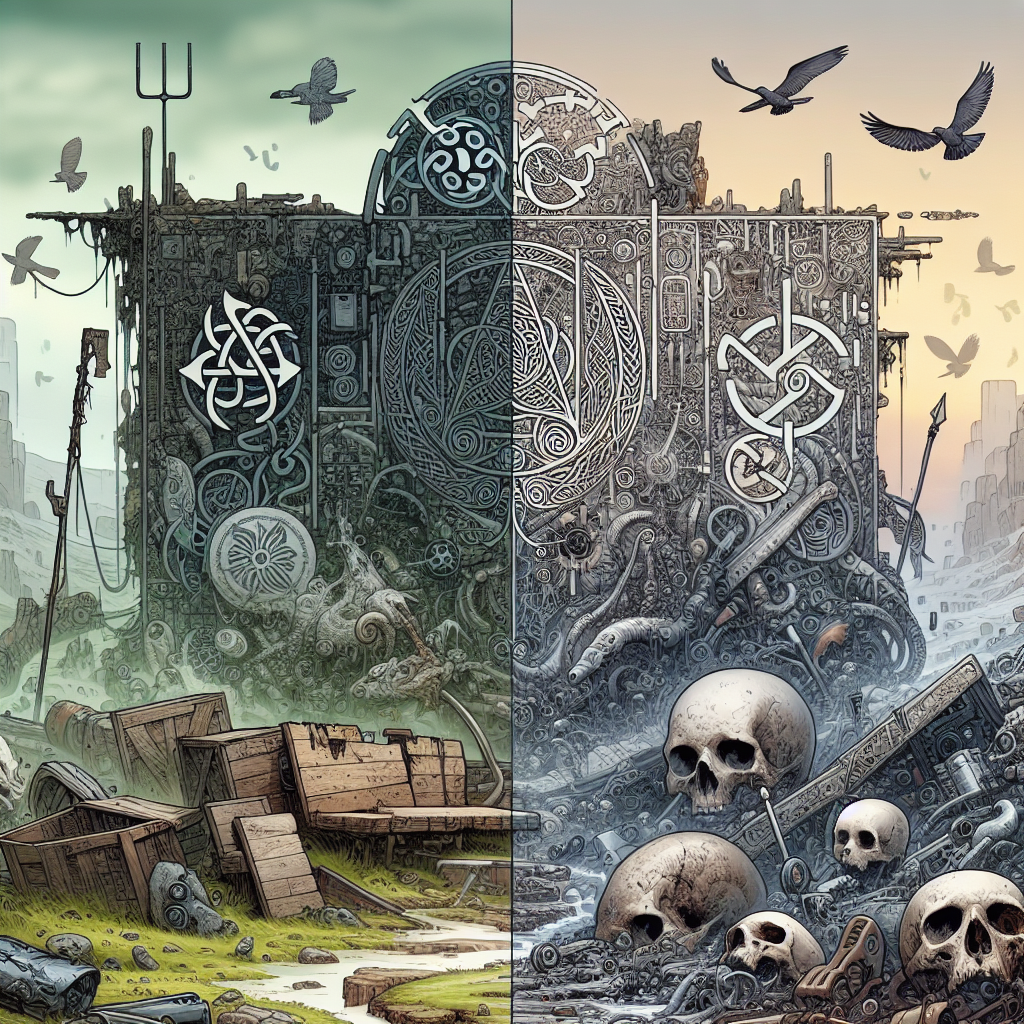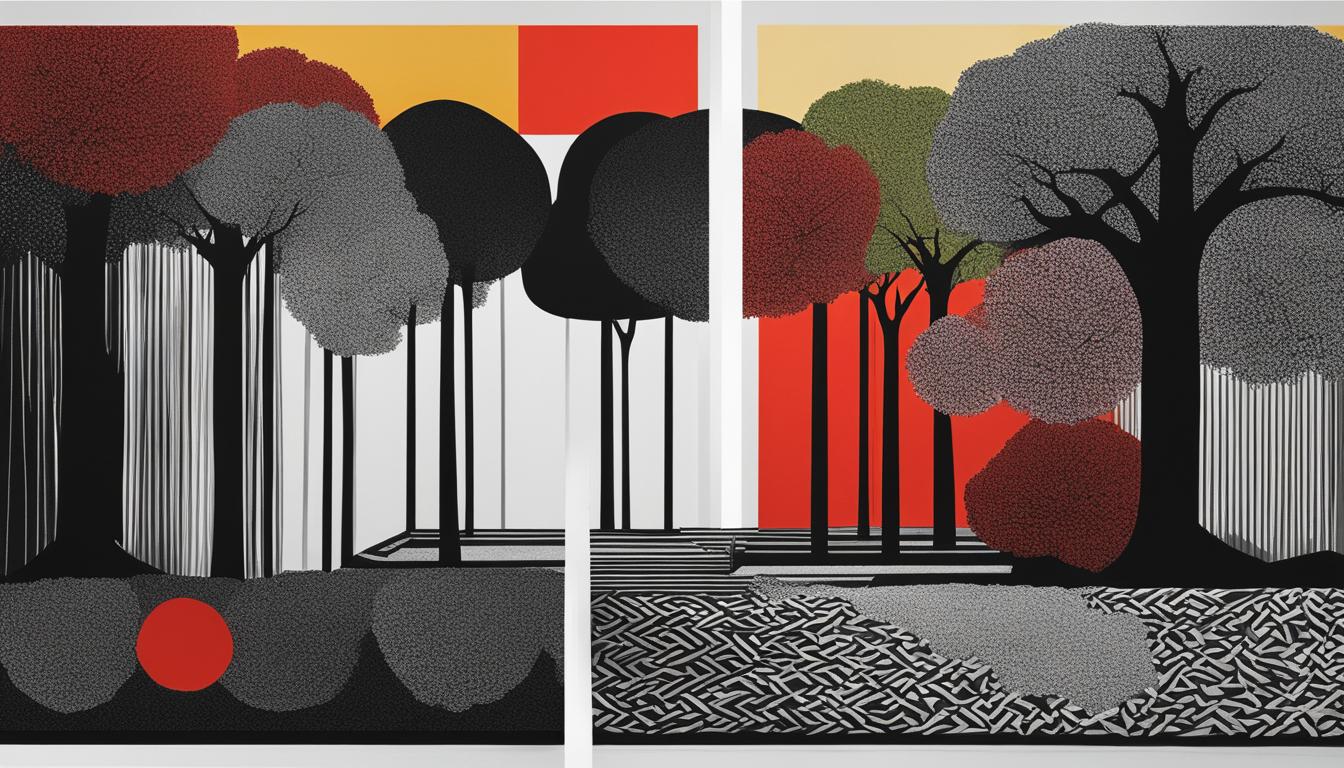The Celts and Norse: A Comparison
When exploring the differences between the Celts and Norse, it becomes evident that their origins and geographical influences played significant roles in shaping their distinct cultures, beliefs, and practices throughout history.
Origins and Geographical Influences
The Celts originated from Central Europe, while the Norse originated from modern-day Scandinavia. This geographical distinction influenced their respective cultures and the territories they inhabited. The Celts primarily settled in regions such as Ireland, Scotland, Wales, and Gaul (modern-day France), while the Norse originated from the Scandinavian countries of Norway, Sweden, and Denmark. Over time, the Norse expanded their influence, establishing settlements in Iceland, Greenland, and parts of the British Isles (Irish Wishes).
Cultural and Artistic Distinctions
The Celts were renowned for their elaborate and intricate artwork. Their artistic expressions often featured intricate knots, spirals, and animal motifs, showcasing their craftsmanship and creativity. On the other hand, the Norse were known for their expertise in shipbuilding, which played a significant role in their seafaring activities. Their ships, such as the iconic Viking longships, were marvels of engineering, enabling them to explore distant lands and participate in trade and warfare (Irish Wishes).
Mythological Beliefs and Practices
In terms of mythology, the Celts and Norse had their own distinct pantheons of gods and goddesses. The Celts worshipped a variety of deities, with figures like Lugh and Morrigan holding prominent roles in their mythology. On the other hand, the Norse worshipped gods such as Odin, Thor, and Freyja, and their mythology encompassed concepts like Ragnarok and Valhalla. While there are some similarities in the belief systems of the Celts and Norse, the specific deities and mythological narratives are distinctly different.
The comparison between the Celts and Norse extends beyond these aspects, with further exploration into their social structures, linguistic differences, warrior cultures, religious beliefs, oral traditions, and historical impact. By studying and appreciating these differences, we gain a deeper understanding of the rich and diverse tapestry of European history and culture.
Social Structures and Linguistic Differences
When comparing the social structures and linguistic differences of the Celts and Norse, it becomes evident that these ancient cultures had distinct characteristics and identities.
Social Hierarchies and Leadership
The Celts and Norse had different social hierarchies and systems of leadership. The Celts, who were a collection of tribes with individual names rather than a unified nation or empire, did not have a centralized political structure. Instead, they operated under a system of tribal chieftains who held authority within their respective tribes. These chieftains were responsible for making decisions and leading their communities.
In contrast, the Norse had a more organized system of governance. They had kings who ruled over various territories and were responsible for maintaining law and order. The Norse kings held significant power and were often viewed as warrior leaders. They were supported by a council of advisors and operated within a hierarchical system where social status and inheritance played a crucial role in leadership succession.
Language and Linguistic Background
The Celts and Norse also had distinct linguistic backgrounds, reflecting their unique cultural heritages and historical influences. The Celts spoke Celtic languages, which survive in modern Irish, Welsh, and Scottish Gaelic. These languages are part of the broader Celtic language family and have evolved over time while retaining their Celtic roots. Today, these languages contribute to the cultural identity of Celtic regions.
On the other hand, the Norse spoke Old Norse, a North Germanic language that was spoken during the Viking Age and has influenced modern Scandinavian languages like Icelandic, Faroese, and Norwegian. Old Norse played a significant role in the development of these languages, contributing to their vocabulary, grammar, and overall linguistic heritage. The linguistic differences between the Celts and Norse reflect their distinct origins and geographical influences (Irish Wishes).
Understanding the social structures and linguistic differences of the Celts and Norse provides valuable insights into their respective cultures and historical contexts. These differences shaped their identities, societal norms, and modes of communication, leaving a lasting impact on their legacies.
Warrior Cultures and Battle Traditions
Both the Celts and Norse had rich warrior cultures, each with their own unique weapons, combat styles, and symbolic practices. In this section, we will explore the differences in weapons and combat styles, as well as the symbolism associated with battle.
Weapons and Combat Styles
The Celts and Norse had distinct preferences when it came to weapons and combat styles. The Celts were known for their use of swords and spears, which were integral to their warfare strategies. These weapons allowed for both close-quarters combat and long-range attacks, providing versatility on the battlefield.
On the other hand, the Norse warriors were more inclined towards the use of axes, specifically the iconic double-headed battle-axes known as “Dane axes.” The Norse valued the brute force and efficiency of these axes, which could deliver devastating blows to their opponents. Additionally, Norse warriors also utilized swords, spears, and shields in battle, but the axe held a special significance in their combat repertoire (Irish Wishes).
Symbolism in Battle
In addition to their distinctive weaponry, both the Celts and Norse imbued their battles with symbolic meaning. The Celts, known for their bravery and ferocity in combat, adorned themselves with blue woad face paint to intimidate their enemies and display their readiness for battle. This striking visual representation was a symbol of their courage and determination on the battlefield.
The Norse warriors, on the other hand, adopted different symbolic practices. They were known to bury their fallen warriors with their weapons and items of significance, symbolizing their status and achievements. These burials, often accompanied by rituals and ceremonies, reflected the Norse belief in an honorable afterlife for those who died in battle. The inclusion of weapons and symbolic items in these burials emphasized the warrior culture and the importance of martial prowess in Norse society.
The warrior cultures of the Celts and Norse played a significant role in shaping their respective societies. While the Celts focused on swords and spears, the Norse warriors favored axes. The symbolic practices associated with battle, such as the blue woad face paint of the Celts and the burial rituals of the Norse, further emphasized their unique warrior identities. Understanding these distinctions helps us appreciate the diverse historical and cultural contexts of these ancient civilizations.
Religious and Spiritual Beliefs
Exploring the religious and spiritual beliefs of the Celts and Norse reveals distinctive mythological systems, reflecting the cultural and historical contexts of each civilization.
Celtic Paganism
Celtic paganism encompasses the religious beliefs and practices of the ancient Celtic people. The Celts worshipped a pantheon of gods and goddesses, many of whom represented different aspects of nature, fertility, and war. Prominent figures in Celtic mythology include Lugh, the god associated with skill and craftsmanship, and the Morrigan, a goddess associated with battle and fate.
Celtic mythology originated primarily from Ireland, Scotland, and Gaulish cultures. However, it is essential to note that much of the primary source material we have today comes from Roman writings or post-conversion Christian texts, which may have influenced the representation of deities. Consequently, our understanding of Celtic paganism is colored by these later interpretations.
Norse Mythology
Norse mythology, originating in Scandinavia and Iceland during the Proto-Norse period, is a collection of stories and beliefs centered around the gods and goddesses worshipped by the Norse people. The Norse pantheon features well-known figures such as Odin, the chief god associated with wisdom and war, Thor, the god of thunder and protection, and Freyja, the goddess of love, beauty, and fertility.
While Norse mythology and Celtic mythology have distinct origins, there are similarities between the two pantheons. In some cases, scholars suggest that gods in Norse and Celtic mythologies may be the same deities with different names due to translations between cultures. For example, Nuadhu could be considered a later form of Njord, and the figure of Scathach may have derived from Skadi (Silent Balance).
Both Norse and Celtic mythologies are polytheistic, with gods and goddesses symbolizing various aspects of the natural world. They share common stories and themes, such as quests for immortality. Norse myths feature quests like Odin’s pursuit of wisdom and Thor’s battles against giants, while Celtic mythology includes quests such as King Arthur’s search for the Holy Grail.
It is important to note that both Norse and Celtic mythologies have common origins in the Common Germanic mythology, which traces back to a shared Western Indo-European mythology. This connection is further evidenced by the presence of similar elements, such as the Green Man, in both Norse and Celtic mythologies.
By delving into the religious and spiritual beliefs of the Celts and Norse, we gain insight into the mythological frameworks that shaped their respective cultures. Despite their differences, both Celtic paganism and Norse mythology reflect the complex relationships ancient societies had with the natural world and the divine.
Oral Traditions and Literary Contributions
The oral traditions and literary contributions of a culture provide valuable insights into their history, beliefs, and cultural identity. Both the Celts and the Norse had rich traditions of storytelling and oral literature. Let’s explore the bardic tradition of the Celts and the sagas of the Norse.
Bardic Tradition of the Celts
The Celts were renowned for their bardic tradition, which involved poets and storytellers who memorized and recited epic tales and legends. Bards held a prominent position in Celtic society, acting as repositories of knowledge and playing crucial roles in the community. They were not only skilled in storytelling but also in composing and performing poetry and songs.
The bards were responsible for preserving the history, myths, and genealogies of their people. Through their performances, they entertained, educated, and inspired their audiences. The bardic tradition was highly respected among the Celts, and bards held a special place in their social structure.
Norse Sagas and Storytelling
Similar to the Celts, the Norse people had a rich tradition of oral storytelling. However, the Norse also developed early forms of written literature, including the famous Icelandic sagas. These sagas were epic narratives that recounted the exploits of legendary heroes, kings, and gods. They were passed down orally from one generation to another before being written down.
The sagas provide a glimpse into the Norse world, encompassing themes of bravery, honor, adventure, and the complex relationships between gods and mortals. Skalds, who were poets and storytellers, played a significant role in Norse society, much like the bards in Celtic culture (Irish Wishes). Skalds composed and performed poems and songs that celebrated heroes, gods, and historical events.
The sagas and the work of skalds were highly valued in Norse society, and their storytelling tradition continues to captivate readers and researchers today. These literary contributions shed light on the Norse worldview, their mythology, and their understanding of the world around them.
The oral traditions and literary contributions of both the Celts and the Norse played a crucial role in preserving their history, cultural heritage, and mythology. Through the tales passed down from generation to generation, these ancient cultures continue to captivate and inspire us today.
Geographical Distribution and Historical Impact
Understanding the geographical distribution and historical impact of the Celts and the Norse is essential in unraveling the differences between these two ancient cultures.
Celtic Territories and Legacy
The Celts primarily inhabited the British Isles and parts of Western Europe, their presence extending from the British Isles to regions such as Gaul (modern-day France), Iberia (modern-day Spain and Portugal), and Central Europe. This geographical distribution influenced their cultural development and interactions with other groups (Irish Wishes).
The legacy of the Celts can still be observed today through the survival of Celtic languages such as Irish, Welsh, and Scottish Gaelic. Additionally, their intricate artwork, characterized by elaborate jewelry, weapons, and coins, reflects their artistic skills and cultural identity. The Celts left behind a rich artistic legacy that continues to captivate and inspire people to this day (Irish Wishes).
Norse Expansion and Influence
The Norse, initially residing in Scandinavia, later expanded their territories, venturing into areas such as Iceland, Greenland, and Vinland (North America). Their extensive exploration and trade activities were facilitated by their advanced shipbuilding skills, with the famous longships serving as a testament to their maritime expertise.
The Norse left a significant impact through their cultural, linguistic, and historical influence. The Old Norse language, spoken by the Norse people, has left lasting marks on modern-day languages such as Icelandic, Faroese, and Norwegian. Moreover, their mythology and belief system, centered around gods like Odin, Thor, and Freyja, continue to fascinate and inspire people worldwide.
The Norse expansion and influence also extended to their contributions in trade, exploration, and settlement, shaping the history and culture of the regions they encountered. Their presence in areas like Iceland and Greenland, and their brief exploration of Vinland, demonstrate their far-reaching impact and adventurous spirit.
Understanding the geographical distribution and historical impact of the Celts and Norse helps shed light on their unique cultural identities and the lasting legacies they have left behind. From their distinctive territories to their artistic achievements and linguistic contributions, these ancient cultures continue to intrigue and inspire our understanding of the past.
 Skip to main content
Skip to main content


